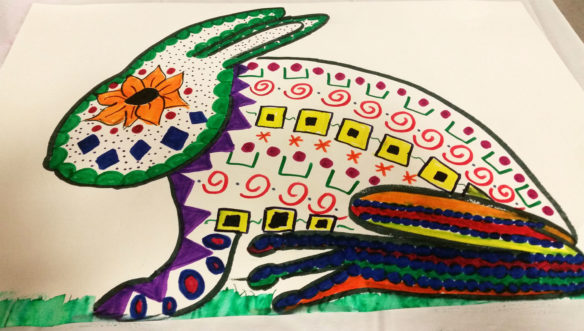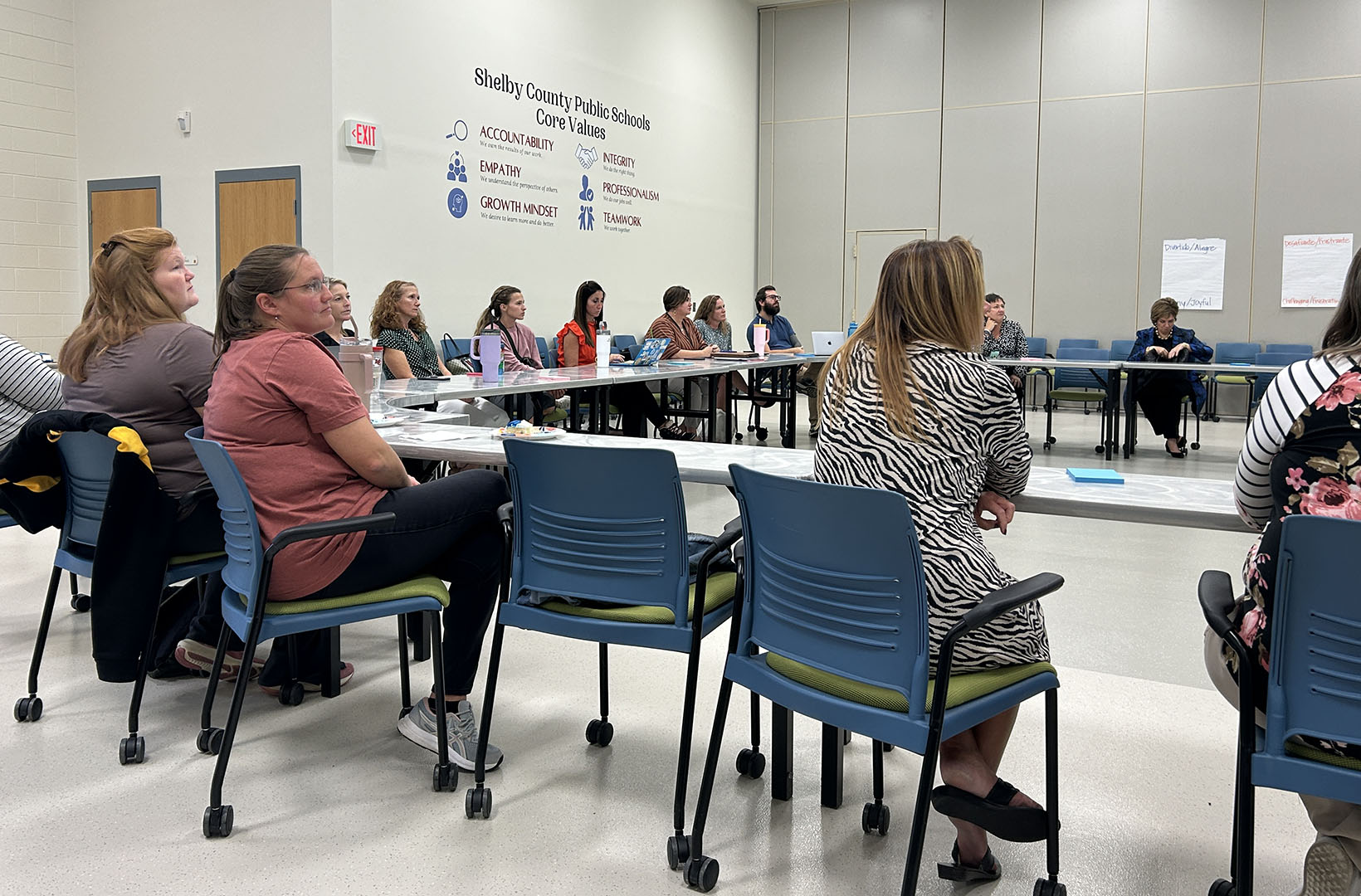
“El Sapejo” is a drawing completed by elementary Spanish teacher Kari Jesse at the Arts Integration Academy she attended in July 2016. The painting was inspired by “Alebrijes,” which are brightly colored folk art sculptures of fantastical creatures from Mexico.
Submitted photo by Kari Jesse
By Kari Jesse
kari.jesse@shelby.kyschools.us
I have a confession to make. I have a fixed mindset at times. Don’t be surprised to hear me say I’m not good at mathematics and that I can’t dance, for example.
My fixed mindset has been an obstacle that has often kept me from trying new things in the classroom. Luckily, though, I am learning to have a growth mindset, and it’s all thanks to integration of content.
In the spring of 2016, I decided to apply for a four-day Arts Integration Academy created by the Kentucky Center for the Arts and the Kentucky Department of Education. The academy’s focus was on integrating art, culture and world languages. As an elementary Spanish teacher, there are few professional development opportunities specifically designed to meet my needs. So, I was initially excited to learn something immediately applicable to my practice. I expected to learn about artists and art forms that I could introduce to my students. What I never expected was to find the artist within myself.
At the academy, I found myself sitting among teachers of various grade levels and content areas, including art, social studies and world languages. Each morning, we participated in hands-on, engaging sessions highlighting cultures and their art forms. Instead of telling us how to integrate culture and the arts, we were shown how to integrate them by becoming active participants ourselves.
I’ll never forget the thrill I felt when we were given white gloves to hold a precious artifact as we learned about the culture from which it came! Analyzing photographs of families from around the world and looking for evidence of their unique cultures gave us the opportunity to explore the world and recognize multiple perspectives. Each session had something for everyone; we all walked away with information and activities to take back to students.
Each afternoon of the academy was focused on creating art. At first, I was puzzled. I had always seen art in the world language classroom as a stand-alone culture lesson to be taught in English. And I certainly didn’t think of myself as an artist.
This academy, though, focused on using art as a means of teaching language and culture. To be able to do that, we needed to experience creating and experiencing art so we would be equipped to use this approach with our students. As a result, I found myself experiencing a huge paradigm shift! Not only did I begin to see myself as an artist, but I also began to see the benefits of integrating content in the target language. I couldn’t wait for the school year to begin so I could try out my newfound knowledge.
Since the academy, I have successfully integrated art to teach language and culture. My first experience was teaching colors to kindergartners using the art of Spanish painter Joan Miró. Not only did they analyze his art to find colors as I introduced them, but they also painted like Miró.
Students enjoyed seeing real art that looked “kid-like.” They were astounded that I actually encouraged them to scribble to make an automatic drawing, and they loved painting with dry watercolors. Students learned colors in a culturally authentic way, and it gave them an experience that made identifying colors engaging and memorable.
Teaching the Miró lesson challenged me professionally, because I had to research art standards for my lesson plan and I had to learn the target language vocabulary I needed to teach art and culture. I had to make sure I could clearly explain the artistic process in the target language down to the smallest detail, which meant I had to create the art, too.
The experience grew me personally, as well. I had never explored Miró’s life and work, so it was interesting to learn more about him. It was fun to explore his works to find just the right ones that met my objectives. I even found one or two that I might like to hang on my living room wall.
Before attending the academy, I would never have had the confidence to teach language and culture through art. My fixed mindset told me I was not an artist and that culture lessons were to be taught in English. Now, I see myself as an artist and I look forward to integrating content through language, thanks to the Arts Integration Academy.
Now if only there were a Dance Integration Academy …
Kari Jesse is a Spanish teacher for grades K-2 at Heritage Elementary and Wright Elementary in Shelby County.




Leave A Comment